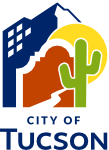Microfiche records prior to 2006 have not been completely digitized and may not be available yet on PRO. If you can not find what you are looking for please submit a records request.
Permit Review Detail
Review Status: Completed
Review Details: GRADING
Permit Number - T03BU03084
Review Name: GRADING
Review Status: Completed
| Review Date | Reviewer's Name | Type of Review | Description | Status | Comments |
|---|---|---|---|---|---|
| 03/01/2004 | PAUL MACHADO | ENGINEERING | REVIEW | Denied | Engineering is approved by Laith Alshami for Paul Machado on 03/01/2004. NPDES is denied by Loren Makus for Paul Machado on 03/01/2004 The Stormwater Pollution Prevention Plan (SWPPP) does not meet the minimum requirements of the construction general permit. Revise the SWPPP in accordance with the following comments and submit three copies of the revised SWPPP with your next submittal. 1. Part IV.C.1. Clearly identify all operators for the project and the areas over which each operator has control. Identify which operator has operational control over plans and specifications and which operator has control over day-to-day operations. 2. Part IV.C.2.d. Estimate the pre-construction and post-construction runoff coefficient and provide soil data and any existent data on the quality of the discharge. 3. Part IV.C.2.e. Include a general location map (e.g. U.S.G.S. quadrangle, portion of a city or county map) showing 1 mile radius around site including receiving waters within one mile of the site. See Part IV.C.4 for a description of receiving waters. 4. Part IV.C.3.a. Identify on the map estimated slopes after grading. 5. Part IV.C.3.c. Identify on the map locations of structural and nonstructural controls identified in the SWPPP. 6. Part IV.C.3.g. Identify on the map locations where stormwater is discharged to a surface water (e.g. ephemeral waters or dry washes) and to MS4s. 7. Part IV.C.4. Identify on the map or in a narrative, the nearest receiving water(s), including ephemeral and intermittent streams, dry sloughs, and arroyos. 8. Part IV.D.1. For each major activity, describe the BMP, the general sequence for implementing BMPs, and which contractor or subcontractor is responsible for each BMP. 9. Part IV.D.2.c. Describe the practice and schedule to routinely remove offsite accumulation of sediment. 10. Part IV.D.3. Describe good housekeeping procedures to be used to prevent litter and debris from being exposed to stormwater. 11. Part IV.D.4.a. Describe and identify interim and permanent stabilization practices for the site. Document where existing vegetation will be preserved. 12. Part IV.D.5.a.i Describe the location, size and retention capacity of the sediment basin and the areas that drain into them. Show that the basins meet the requirements of the general permit. 13. Part IV.D.5.b Describe where and what type of velocity dissipation devices will be used at discharge locations and along any outfall channel. 14. Part IV.D.7. Identify all allowable sources of non-stormwater discharges except for flows from fire-fighting activities a. Describe how all non-stormwater discharges will be eliminated or reduced to the extent feasible b. Describe how BMPs will be implemented for non-stormwater discharges c. If superchlorinated wastewaters will be generated, describe how they will be dechlorinated or held on site until chlorine levels have dissipated, unless used for firefighting. 15. Part IV.D.8.a. Describe measures to be used to prevent discharge of solid materials to waters of U.S. 16. Part IV.D.8.c. Describe the location and type of all construction and waste materials stored on site. Provide for updates to the SWPPP as necessary. 17. Part IV.D.8.e. Describe measures to be used to sufficiently stabilize soil at culvert locations. 18. Part IV.E.1. Describe procedure and activities to be used to maintain all erosion and sediment controls and other protective measures in effective operating condition a. Describe procedures and activities to be used to maintain BMPs as soon as possible, if site inspections identify BMPs are not operating effectively 19. Part IV.E.2. Describe procedures and activities to be used to modify or add BMPs before next storm event, if necessary or as soon as practicable 20. Part IV.E.3. Describe procedures and activities to be used to remove sediment from traps or basins when design capacity is reduced by 50% 21. Part IV.H.1. Revise the SWPPP so that the inspection requirements listed on the inspection form are consistent with the inspection requirements listed in the narrative. Revise the form to provide the required certification statement. 22. Revise Key Note 1 on the site map to refer to the correct detail. 23. Revise the "Description of Controls" section in accordance with the following comments: a. Provide for a designated concrete washout area. Show the location on the site map. b. Revise the lists on the last two pages of this section (if you decide that the lists are necessary) to provide specific practices that will be followed to achieve the stated goals. Make sure that the stated practices, such as for re-vegetation are consistent with construction documents such as the landscape plan. If you have any questions or if you want to set up a meeting, please call me at (520) 791-5550 ext. 1161 or email me at loren.makus@tucsonaz.gov. Loren Makus, EIT Senior Engineering Associate |
| 03/02/2004 | Andrew Connor | NPPO | REVIEW | Denied | Submit approved development plan including NPPO and landscape plans. |
Final Status
| Task End Date | Reviewer's Name | Type of Review | Description |
|---|---|---|---|
| 03/02/2004 | EGRANT1 | OUT TO CUSTOMER | Completed |
| 03/02/2004 | ANGIE SHOFFSTALL | REJECT SHELF | Completed |
